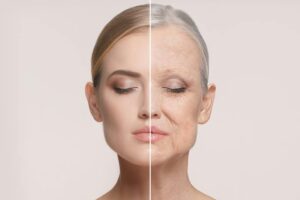Have you ever noticed that your skin reacts differently when you travel? Most of my travels have involved wetter climates, but a few years ago, we ventured to the desert. One week and my skin was about to shrivel up like a raisin. Skin requires different products when in different climates.
Your skin is always evolving and adapting. Now throw in weather pattern changes and you have a whole new variation in your routine. If you’re traveling, moving, or just experiencing seasonal changes, it’s important to understand the relationship between climates and your skin. Not all skin types adjust easily to changing weather patterns. Some skin types handle the change well, whereas others may have adverse reactions. Knowing your skin type and having the right products will keep your skin healthy no matter where you are.
There are five different climates on earth: temperate, tropical, dry, continental, and polar.
Temperate: This climate has seasonal changes and is ideal for all skin types. Colder winters, warmer summers, and annual rainfall allows for skin to stay in balance year-round. The best part is that your skincare routine stays consistent. Plan on sunscreen for days when the UV index is high.
Tropical: Humid and rainy with consistently warm temperatures year-round, tropical climates keep the skin hydrated, which gives that plump look. With extreme sun exposure, sunscreen is a must! And while most skin types adjust well, those with oily skin may experience acne. This is because humidity traps the oil in the pores, expanding the pores, and producing more oil. Avoid over washing the skin, use oil blotting sheets, moisturize, and drink plenty of water to maintain hydration.
Dry: Very little rainfall and humidity and high temperatures means that consistent moisturizing and hydration are required for healthy nourished skin. Oily skin types thrive in this climate while those with dry skin should focus on maintaining moisture and balance. Use a vitamin C lip balm to hydrate the lips and keep the skin exfoliated and hydrated to maintain skin moisture. Also, a good humidifier does wonders!
Continental: Areas experiencing this climate have extreme fluctuations in temperatures from mildly warm summers to subarctic temperatures. This climate can be harsh for all skin types. If you plan on venturing to the Northern Hemisphere, be prepared with sunscreen, moisturizer, and vitamin C to protect against the elements.
Polar: Bitter cold, little to no humidity, and drier air can cause the skin to become red and inflamed. Sunscreen, vitamin C lip balm, moisturizer, and keeping the face and eyes fully covered when outside will keep skin protected and hydrated. Avoid using hot water while bathing or showering as this can suck the moisture from the skin, leaving the skin red and aggravated. Opt for lukewarm bathing, a thick moisturizer, and a full-length fleece robe.
The Take Away
The relationship between your skin and climate can be testy. Being prepared is key. Developing a healthy skincare practice for changing climates makes an enormous difference in how your skin reacts in other environments. Be prepared for the changes and your skin will thank you!
For information on adapting a skincare routine, check out the “Personalized Care Guide.“





